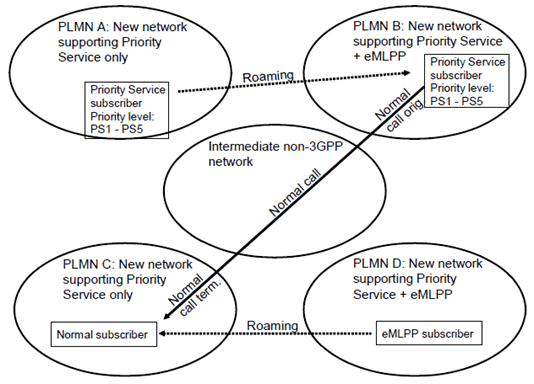Content for TR 22.952 Word version: 18.0.1
0…
4…
4.8…
5
5.1
5.2
5.3
5.4
5.5
5.6
5.7
5.8
5.9
5.10
5.11
5.12
5.13
6…
A…
B
B.1
B.2
B.3
B.4
B.5
B.6
B.7
B.8
B.9
C
D…
B.4 Normal call to eMLPP subscriber in Priority service only network p. 42
This use case is intended to illustrate that Priority Service is not disturbed by eMLPP for normal calls.

Figure B.4: Normal call to eMLPP subscriber in Priority Service only network
(⇒ copy of original 3GPP image)
(⇒ copy of original 3GPP image)
This use case is identical to use case 3, except that here the Priority Service subscriber in (B) initiates a normal call instead of a Priority Service call.
Use case 4:
- A Service User with an assigned Priority Service level in the range of Priority Service1 - Priority Service5 belongs to a new network (A) supporting Priority Service only,
- The Service User roams to a new network (B) supporting both Priority Service and eMLPP.
- An eMLPP subscriber with assigned maximum and default priority (precedence) levels in the range of eMLPP1 - eMLPP7 belongs to a new network (D) supporting both Priority Service and eMLPP.
- The eMLPP subscriber roams to a new network (C) supporting Priority Service only.
- The Service User in (B) sets up a normal call towards the eMLPP subscriber in (C).
- The call is routed via an intermediate non-3GPP network.